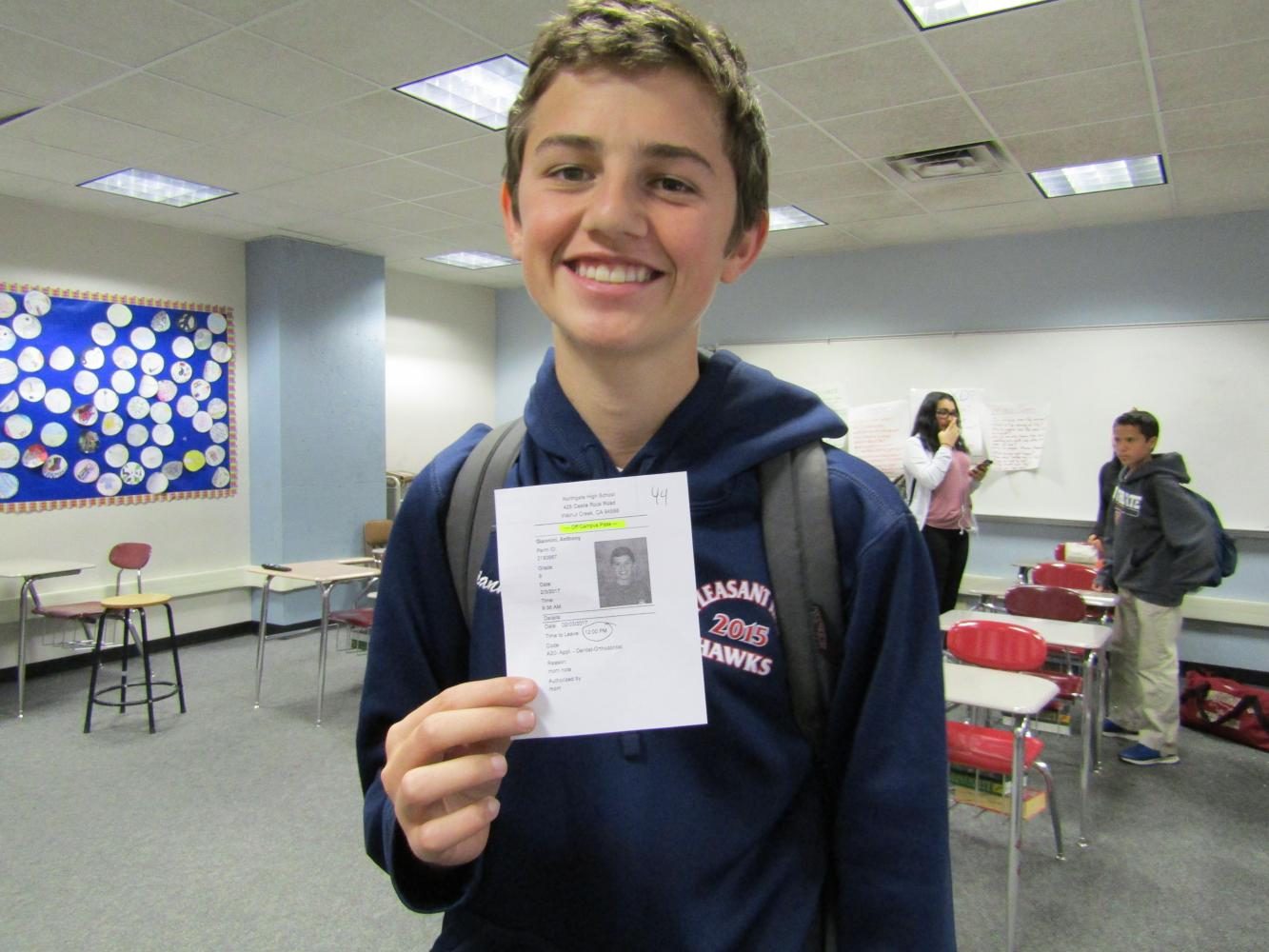Statistics show that tardy policy is effective
Freshman Anthony Giannini poses with his picture on his tardy note.
Better watch the clock because the tardy policy isn’t changing anytime soon. The new policy introduced this school year yielded a big outcry from students, but numbers prove it is working on improving students’ punctuality.
Statistics comparing tardies in the first three quarters of this year to those of the past three years show a significant decrease this year. Tardies in the first three quarters of the 2016-2017 school year reached 12,251, a 35.7 percent and a 37.3 percent decrease from the 2014-2015 and 2015-2016 school years, respectively.
“The quantitative data is showing that it’s working,” Vice Principal Ben Campopiano said. “We also have anecdotal evidence from the teachers that they’re feeling like kids are on time to class more. I think it’s working because this data shows the numbers are way down.”
The strict number of tardies that are allowed each semester – five from any class before a detention and 10 for a Saturday detention – was upsetting to students because the wide scope of the campus cannot be traversed in the five minute
“The tardy policy is a good way to lower student tardies but the number of tardies allowed in a week should be greater,” junior Priya Verma said. “It is not possible for people to go to their locker and get back to their class in the five minutes that we get.”
“I think the policy is an effective way to curb the number of tardies, but it doesn’t make me any less tardy,” senior Ariel Vignalats elaborated on why she is sometimes late. “I try to rush to get to class, but then I realize that I forgot something and go to my locker and retrieve it. So far this semester, I have had one Saturday school and two detentions because of my tardiness.”
The change from last year allowing six tardies a week to this year allowing five a semester for the first infraction correlates to the statistics, showing the new policy is moving towards the goal of cutting tardies even further.
“It’s a pretty simple policy,” Campiano remarked. “It resets every quarter, it has some “teeth” in a sense that kids don’t want detention or Saturday school.”
Despite a significant decline in tardies, those recorded in the first three quarters of this school year are still high. The administration has no new plans at the moment to alter the tardy policy.
“We haven’t really discussed further actions or tweaks to the system,” Campopiano said. “This summer we will definitely look at all the data we have and re-discuss it.”















